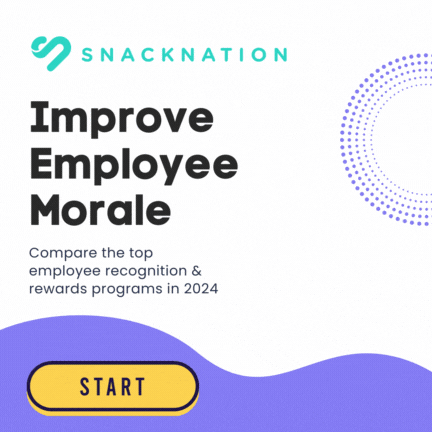Here’s the thing about established “best practices” —
They won’t be the things that put your brand over the top.
Think about it. By the time there’s consensus about which tactics constitute best practices, most brands are already doing them.
If you want to stand out from the competition, you have to do things differently. I believe that a significant portion – up to 20% – of your sales and marketing strategies must be experimental if you want to grow. This means trying things that are counterintuitive, have never been done before, that might not scale – or that aren’t even measurable.
To learn more about this, I asked some of the best CPG and snack brands in the industry to share their most surprising (and surprisingly successful) growth strategies.
Here’s what they shared.
1. Focus on Niche Retail Channels First
Jeff Wiguna, Kuju Coffee Co-Founder & CEO
“So many food and snack brands try to start in the natural or foodservice channels – which makes sense because that’s where so much consumption happens. We actually opted for a third way and got our start in the outdoor channel, in retailers like REI, Bass Pro Shops, Sportsman’s Warehouse, Academy Sports & Outdoors, etc.”
Why it works:
“Starting out in this channel gave us the space to really own a channel because so few competed for it. People would say the channel was too small, but the reality is that it gave us a strong foundation to launch into other channels, namely the natural/specialty channel.
“The key was that the channel approach was authentic. My brother and I got tired of drinking instant coffee while camping so we literally designed the packaging to fit into REI because we love shopping there.
“Ultimately, it’s the passion in our brand that drives growth and momentum, so much so that what I do now is think about our activities from the standpoint of, ‘Is this driven by passion and belief, or is it just something people say we should be doing?’ People can feel the difference.”
Pro-tip: Don’t forget the ultimate targeted, niche channel – the office via SnackNation! (We had to mention it.)
2. Prioritize Customer Retention Over Acquisition
Sisun Lee, More Labs (Morning Recovery) CEO
“The most important metric that we optimize for is retention. We deeply care about the share of new customers that return to buy again, and how often. Over a specific time period, we define growth like this:
Net Growth = New Customers + Resurrected Customers – Churned Customers
“While it’s important to improve all aspects of the growth equation, I think it’s important to start with retention (i.e. minimizing churn). Visualize a leaky bucket with water poured into it. The greater the leakage, the harder it is for you to maintain water in the bucket. This is the same when you visualize growth with new customers coming in. Without the ability to retain them, they churn. You have no sustainable growth.”
Why it works:
“I think many DTC companies focus solely on customer acquisition, or the top of the funnel. While I do think it’s critical, it’s not sustainable without healthy retention. It’s harder to resurrect churned customers (those who used your product and left) than to acquire new customers who have yet to try your product. Focus on the latter once your bucket is not too leaky. Strong retention means compound growth as it increases (1) word of mouth referrals, (2) repeat purchase rates, and (3) LTV of your new customers as they stick around.
Acquisition is a measurement of marketing ROI. Retention is a measurement of product ROI. – Sisun Lee, Morning Recovery
“Acquisition is sexy for many, because you can immediately measure its impact on growth. With better ads, optimized marketing funnels, etc. – your immediate return on spend improves. Retention, on the other hand, takes time and is a truer measure of your value proposition. No funnel gimmicks will convince someone who decided not to use your product to use it again. It’s harder. But it’s critical. We like to think of acquisition as a measurement of our marketing ROI while thinking of retention as a measurement of our product ROI.”
Pro-tip: This principle also shows up at retail. It’s important to focus on more than just number of doors or initial sales. Instead, prioritize repeat purchase and sales velocity.
3. Hook Up the Mom & Pops
Frank Lambert, Crunchsters Founder & CEO
“One unusual thing we did was to mail out full sample sets of all of our SKU’s with a nice unboxing to all of the small co-op, independent stores that we could identify, no matter the size. We love the dedicated grass roots purists of natural food and wanted to share the Crunchsters love directly with them, with no one in the middle. ”
Why it works:
“We admire how hard these stores work for something they believe in, and in the face of daunting odds. We were rewarded with 1) lots of new fans and much return love, and 2) an over 75% acceptance rate in the stores that we followed up with. We continue to support them with discounts and demos.”
4. Write Handwritten Notes (and other ‘Wow’ Moments)
Johnny Fayad, Eat Your Coffee Co-Founder & CEO
“An out-of-the-ordinary thing we do at Eat Your Coffee that has been a driver for our business, both in mission and in the experience of our customers, is putting a big emphasis on the little things. Handwritten notes, a pair of socks to put a pep in our customers’ steps, some extra bars to share with a co-worker, friend, or family member, etc. These are all things we do to help energize people to do more, but have also led to real business outcomes in strong LTV, user-generated content, and organic traffic to our site.”
Why it works:
“All of these things take time, resources, and planning, but people want to feel like they’re a part of something more than just buying a tasty snack, and this is what we try to do to instill a sense of community in our customer base – or as we like to call them, ‘friends.’”
5. Go Carbon Neutral
Tom Keogh, Keogh’s Crisps Founder & Managing Director
“We are the first food business in Ireland to achieve ‘Carbon Neutral’ status, which was achieved in partnership with Vita, an organization dedicated to improving the lives of farming communities around the world. I believe it has helped us become the fastest growing potato chip brand in Ireland.”
Why it works:
“This decision required a significant investment of resources, yet being a first-mover in this space resonates with the loyal fans of Keogh’s Crisps who share our values.
“More importantly, partnering with project Vita has enabled us to help over 12,000 farming families in Ethiopia to become self sufficient though sharing farming best-practices and the installation of clean water wells and improved cooking stoves.”
Bonus Tip – Emphasize Product Innovation
“We think out of the box on product development,” explained Craize Founder & CEO Leonardo Cotter. “It’s why we offered a unique version of an unheard-of ethnic, toasted crunchy product….i.e.the Arepa crisps!”
Stryve Biltong Co-Founder & COO Joe Oblas expressed a similar sentiment – the novelty of their innovative product is what drew attention and drove adoption.
“The growth factor that really surprised me was the fact that Biltong has a funny name that few Americans have heard of. Although Biltong is nutritionally superior to Jerky, people are really gravitating to the taste and texture which has been great.”
Why it works:
In both cases, the novelty factor draws people in and drives sampling. The taste, nutrition, and functional benefits keeps them coming back.
What’s one surprising tactic that has moved the needle for your brand? Why do you think it worked? Let me know in the comments below.













